You are brushing your horse in the stall and everything’s great all of a sudden your horse turns their hind end right in your face.
Maybe you have a halter and are going to bring your horse out of the stall and he immediately swings his butt toward you and faces the corner.
Maybe you are trying to work on pressure and release to get your horse to move over and she swings her hindquarters at you with ears pinned, tail swishing, and biting at the air.
Maybe you have your horse tied and you are going to pull or trim your horse’s mane. Your horse tries to turn and squish you against the wall.
There are four main reasons I can think of for why the horse may be turning their hind end toward you.
The horse is not respecting you and is showing dominance, which can continue to escalate if the horse is not corrected. The horse is fearful and trying to avoid you. It is a mare in heat that is seeing you as a potential mate or is threatening you to stay away. Lastly, the horse has learned at some point, typically as a foal that people will scratch their butt and it feels good.
- First, you want to figure out which reason is your horse’s for turning their hindquarters toward you.
- Then you need to teach them that it is not acceptable behavior, in a way, best suited to the reason your horse is doing it.
Turning Hindquarters Toward You Meaning Lack Of Respect And Dominance
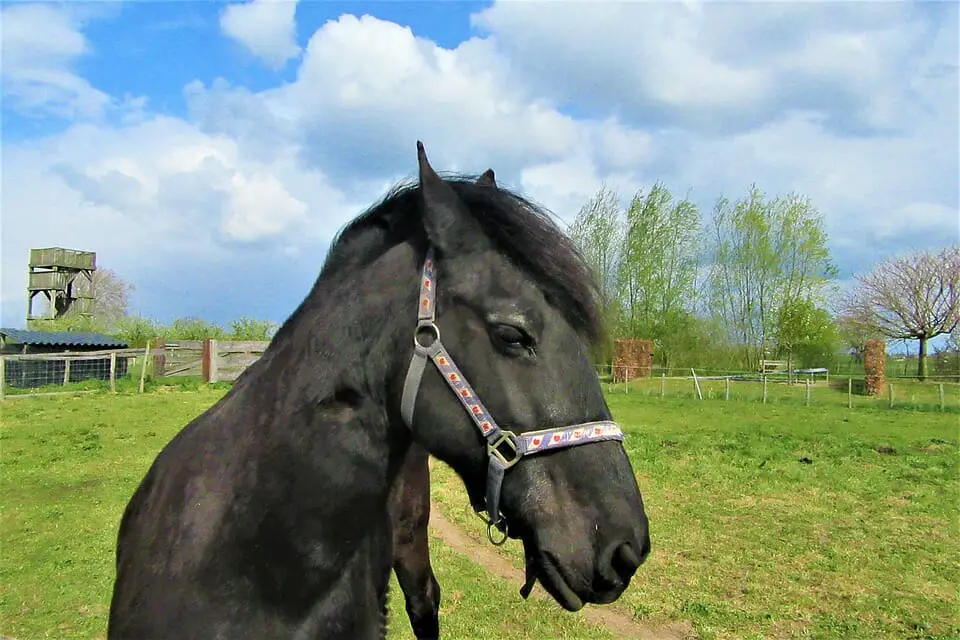
There was a horse named Maverick a beefy black paint gelding I used to work with and ride.
He was a stallion until he was about 8 years old, which is when he was gelded. Being a stallion for so long is most likely the reason he was a more dominant horse.
If you were bossy to him and tried to push him around or he perceived you were being too rough or bossy. Also if you asked him to do something he didn’t want to do. He would get aggressive and try to put you in your place by displaying dominance. He was also typically the top horse in turnout.
If he didn’t want to do something, whether get a halter on and come out of his stall or he didn’t feel like being caught and taken from his paddock, or he was told him to wait in the corner when he was going to get his grain, but he wanted it now!
During these times the handler would get reprimanding with their voice, be a little rougher to try to get him to comply or even hold a crop or whip… more so as protection I think, not just outright smacking him or anything like that. Or if the handler got impatient or angry. These were triggers that would set him off and he got nasty real quick.
He would swing his hindquarters, pin his ears, swish his tail, bite the air, bob his head, lift a hind leg, and sometimes kick out. He never actually ever kicked anyone but he was threatening to do it.
If these are signs you see in your horse then it is a lack of respect, the horse is threatening to kick you, and they are trying to be the one that is in control of the situation.
But your horse can show a lack of respect more subtly as well.
If they swing there hind end toward you and maybe back up toward you. They’re swishing their tail or their tail may be tucked down, their ears may or may not be back, their hind legs may be moving side to side, or lifting a hind leg slightly.
Almost how an older horse is trying to discipline a foal or move them away.
Turing Hindquarters Toward You Meaning Fear and Avoidance

It is possible the horse has had bad experiences that you don’t know about. A horse may turn into a corner of their stall or try to turn away from you because they are fearful or anxious.
At a barn I worked at there was this chestnut paint gelding that everyone loved. He was a very sweet boy, but he was extremely sensitive as well. Sensitive to your body language, your emotions, how you handled him, and touched him. He was very responsive to the forward leg aids undersaddle I might add.
So strangely enough he developed a fear of cameras and phones. He would run to the corner of his stall if anyone tried to take a picture of him and all you saw was his butt and the back of his head. The barn staff and instructors tried to get him used to pictures with treats right after but I am not sure if he has gotten over it yet.
Over time I was able to gain his trust more and more. He seemed like a horse that has held in a lot and had a somewhat rough life. But you can see in his eyes he has fear but wants to trust. Not sure if you have ever experienced that with a horse. I have with a handful.
When I started handling him he often would turn away and have his hindquarters facing me. His head would be raised, nostrils a little more flared and eyes more open, and his tail clamped. He never threatened to kick never pinned his ears, swished his tail, lifted a leg.
But you could tell all he wanted to do was escape. He typically did this with haltering or when putting blankets on or changing them.
So in this circumstance he had fear, lack of trust and he strongly wanted to flee.
Another sign of fear and mistrust is running away from you in a turnout area. This could also be a lack of respect and not wanting to do something. But typically if it is out of disrespect the horse will show other signs of aggression.
Turning Hindquarters Toward You Meaning In Heat
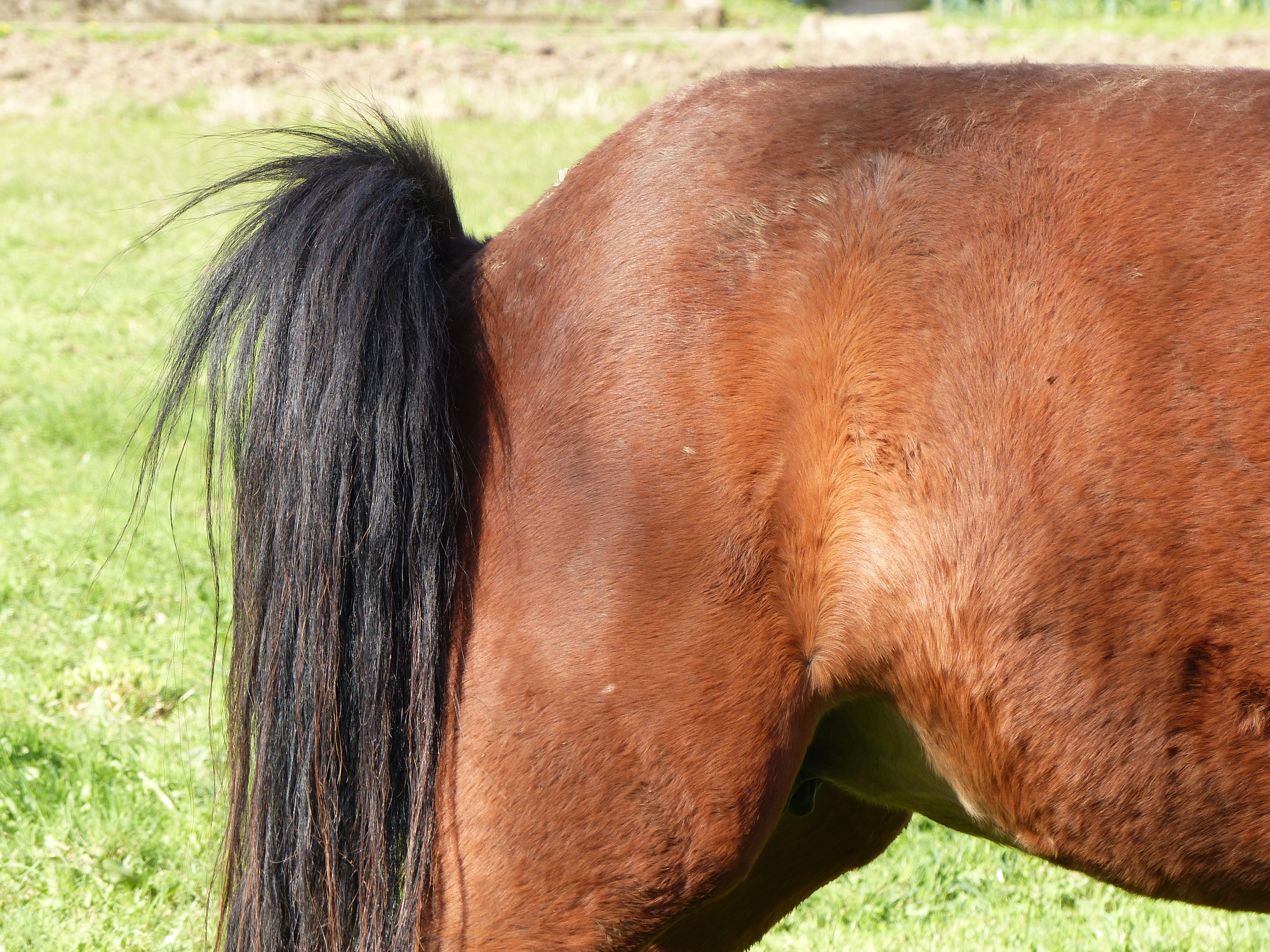
Yea this one is a little bit gross when a mare is considering you as a mate. Mares have something else on their mind when they are in the heat so they are not thinking as clearly. There was a mare at a barn I used to be a working student, when she was in heat she was a different horse.
She would either swing her butt around to you or she would put her head on your shoulder or your head and push down. This only happened when she was in heat.
You can tell the mare is in heat and considering you as a mate, if she turns, doesn’t show signs of aggression, she may squat and urinate, as well as start winking. She may look back at you like what are you waiting for.
OR back to the lack of respect and dominance. Some mares don’t show much change in behavior when it comes to estrus the correct term. But other mares become more moody, cranky, aggressive and uncooperative.
If this only happens during estrus there are hormone options you can talk about with your vet.
Turning Hindquarters Toward You As A Behavior Learn From Getting Bum Scratches
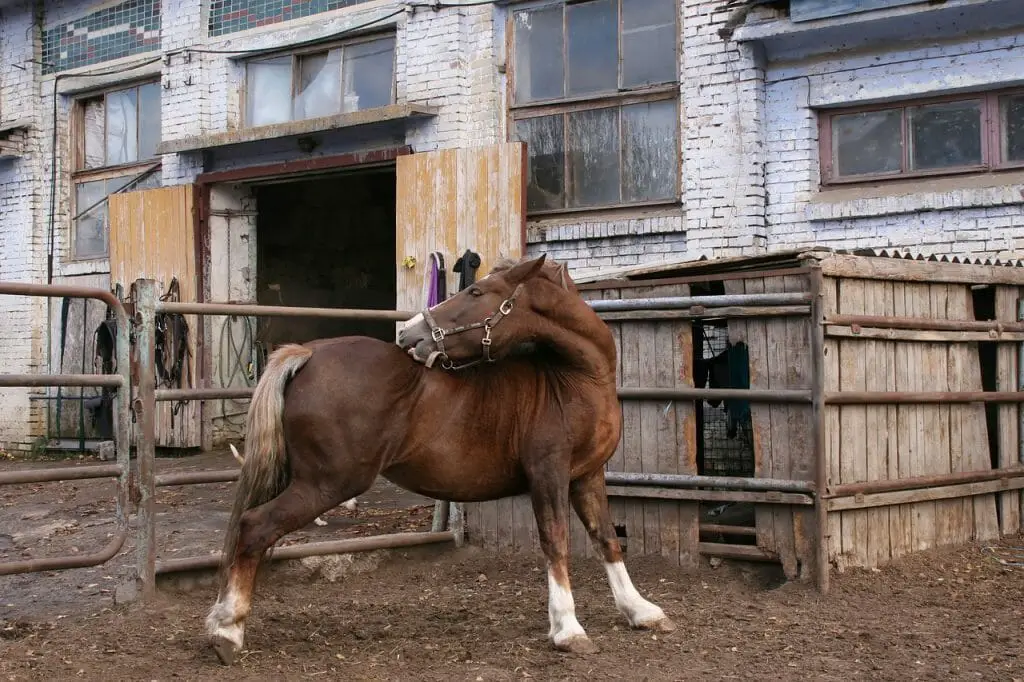
Foals are adorable and if you haven’t checked out my facts about foals, blog post with cute foal pics, then you should. Turning the bum toward people for a scratch often comes from foal hood.
Someone discovers the foal loves to have their bum scratched. They can’t resist the cuteness of the foal wiggling their lip and swaying their bum back and forth as they get their itch scratched.
As cute as this is into adulthood, having a large horse swing their butt over to you for a bum scratch is not okay behavior. It puts you in an unsafe situation if the horse does decide to kick. Not to mention you are in the horse’s blind spot.
Figure Out The Reason Your Horse Is Turning Their Bum To You
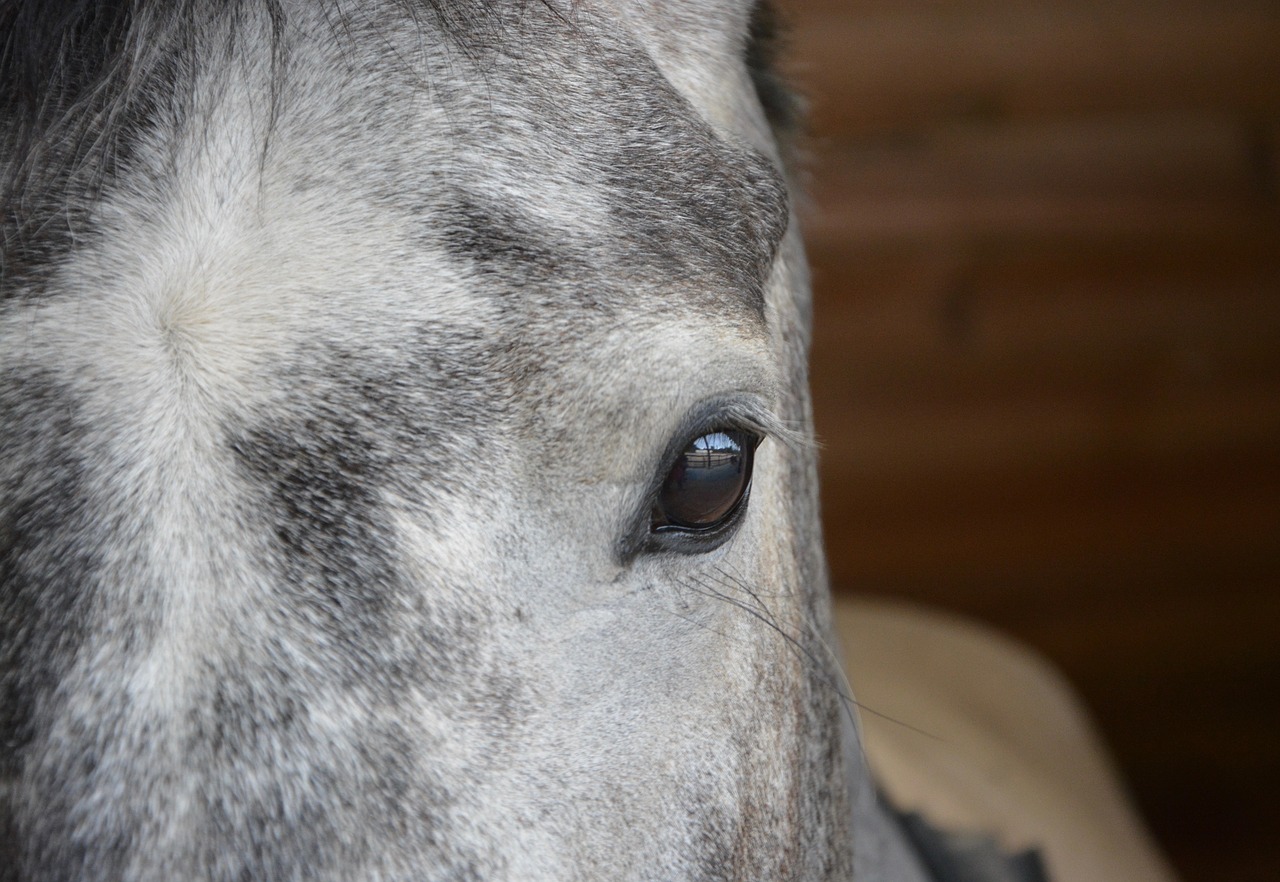
I have a chart to help you compare behaviors with the different reasons for turning the bum toward you. Then below this there are some solutions you can try with your horse based on the reason for the horse turning their hindquarters toward you.
| Dominant | Fear-Based | In Heat Sexual | In Heat Aggressive | Likes Bum Scratches |
| Aggressive & trying to be in control of the situation | Scared & trying to avoid you | sexual, mind is preoccupied with other things, not thinking straight | hormonal uncomfortable, cranky, not wanting to work, not thinking straight | friendly but disrespectful, bad habit |
| Ears pinned back | Ears back focused on you | Ears forward, sideways, or back focused on you | Ears pinned back | Ears back focused on you or ears forward |
| Leg lifted threatening to kick | Legs on the ground, haunches tucked under, possible leg lifted if feeling threatened | Back legs on the ground, spread out slightly, maybe swaying side to side | Leg lifted threatening to kick | Backing up toward you. No lifting leg. Swaying back and forth slightly. Pausing and backing . |
| Tail Swishing, and not relaxed | Tail is clamped down | Tail is lifted up to the side and she may urinate. | Tail Swishing, and not relaxed, may urinate. | Tail is relaxed |
What To Do If The Behavior Is From Dominance

It is possible to teach a horse to become dominant over you, a horse may have a dominant personality already, or a horse might develop some aggressive behaviors from being treated roughly.
What to do will depend on your experience, skill, and comfort level when dealing with a more dominant horse. You need to set boundaries, correct behavior immediately, follow-through, and be consistent.
If you don’t feel confident correcting this behavior then it is best to get a trainer that has experience successfully correcting this behavior. Make sure you look into the training methods used and understand what is being done and agree with the method.
Sometimes horses need a firm correction so they are clear about what is okay and not okay, especially when the horse is displaying potentially dangerous behaviors.
Keep in mind each horse responds differently.
5 Things You Can Do To Help Stop A Horse Being Dominant Turning Hindquarters
- Something important to look into with aggressive behavior is if the horse is in pain.
There are many reasons a horse can feel pain. If a horse is in pain and being ridden or worked causes them more pain. They often become resistant and uncooperative, understandably. This can result in aggression as a way to protect themselves from feeling more pain.
Some examples of sources of pain in horses:
- Ulcers
- Lyme disease
- Poor saddle fit
- Arthritis
- Equine Protozoal Myelitis
- Tightness or sore muscles
- A bone chip or OCD lesion
- Lameness
- Thin soles
- Mouth soreness from teeth issues or rough handling with bit.
Always rule out pain with horses first or assume it’s pain until you know otherwise. This often gets overlooked and most people think it is purely behavioral or disrespectful.
That being said, just because a horse has pain doesn’t mean a dangerous behavior is okay.
- Don’t groom your horse loose in the stall. Instead, have your horse tied up and in a place where you cannot be pinned against the wall if the horse decides to try to turn their hindquarters to you.
You can also groom with your horse on a lead rope on. So you have more control to move your horses feet which brings us to number 3.
- Have the horse on a lead rope so that if they try to turn their hindquarters toward you, you have some control and can move the horses hindquarters.
You want to do this immediately so the horse knows it is not okay to turn their hind quarters to you. It is called disengaging the hindquarters.
It is basically a simplified version of the turn on the forehand.
You can do this swinging a rope or using a training stick (carrot stick, clinician stick etc.)
Using one of this tools allows you to stay away from the horses hindend out of the kick zone.
When you disengage the hindquarters it makes the horse unable to effectively kick, rear, buck, or take off. So it is beneficial to practice this with your horse so when you’re actually in a situation where you need to gain control of your horse it is not something new to you both.
Disengaging the hindquarters is a good exercise for respect. Whoever moves the other’s feet is the leader in the horse-human herd of 2.
Watch this video on YouTube where Andrea Coa explains pretty well the process of disengaging the hindquarters. So I recommend watching the video if you don’t already know how to do this.
- Spend time with the horse other than to work the horse. This will help you to bond with the horse and help the horse to look forward to time with you when they see you.
For ideas on things, you can do with your horse go to the section “Fun Things To Improve Your Bond With Your Horse” on my blog post Owning A Horse While Pregnant: What To Do With Your Horse. You may not be pregnant but it will give you some ideas for bonding activities.
- Practice groundwork exercises that include sensitizing and desensitizing. Properly done groundwork can be a great way to create a better relationship with your horse. You gain respect and you gain the horse’s trust.
Here are a couple helpful books that have groundwork exercises you can try with your horse.
- 101 Horsemanship Exercises by Rio Barrett (Amazon link)- this book has exercises on the ground and in the saddle and uses a lot of pictures to help illustrate what they are talking about. Rio shows skills to develop on the ground with the horse that transfers into the saddle.
- 101 Ground Training Exercises for Every Horse & Handler by Cherry Hill (Amazon link)- this book assumes you are a beginner and gives you the information you need to be successful with groundwork training. The exercises in this book cover teaching basic ground manners to lunging and long lining. It is a great book for covering all your horse’s basics.
5 Things To Do If The Behavior Is From Fear

- Take things slow. You should never rush training with horses but especially not with a fearful horse. This puts more pressure on you and the horse. Be happy with small wins.
- Though treats are not always a good idea. When you go to catch the horse bring a treat every time so the horse will start to associate you positively and want to turn toward you instead of away. Wait for the horse to turn to you before going in the stall.
- Join up properly done can help a horse see you as leader which will help the horse to trust you and no longer see you as so much of a threat.
- Like I mentioned in the section for what to do for dominant behaving horses spend time other than riding or training with your horse. Just be with the horse, hand grazing, massage, scratching or stroking the horse. Look in the section above for the blog post which has a section for bonding activities with the horse.
- Desensitization ground work. A fearful horse is usually very sensitive. Desensitizing a horse creates a less sensitive and reactive horse. Just be careful you don’t desensitize the horse too much. You may have to have some sensitizes exercises included as well. Its all about finding balance for the horse. You don’t want a horse too sensitive or too desensitized.
Doing these things will help your horse to feel more relaxed when you are around and once your horse is no longer fearful the reason to turn away from you is gone.
What To Do If The Behavior Is From Being In Heat
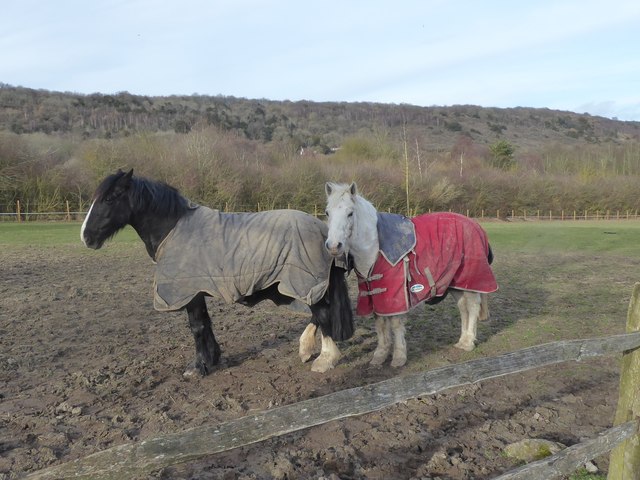
If this is a problem only during estrus it may help to put your mare on a hormone to suppress them from going into heat.
Regumate is one product vets prescribed to mares that get moody during estrus or for when owners don’t want their mare to go into heat.
This is something to discuss with your vet because it does need to be prescribed.
What To Do If The Behavior Is From Getting Scratches
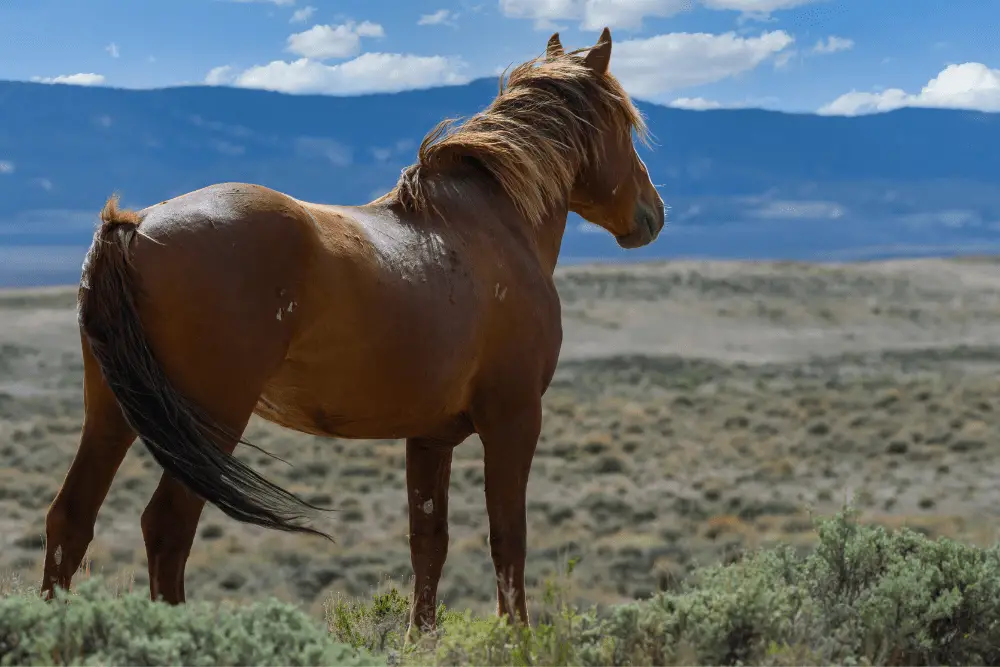
First and foremost don’t indulge in scratching your horses bottom any longer.
Until the horse understands that the behavior is unwanted, keep a lead rope on the horse, so you are able to turn the horse to face you or disengage the hindquarters.
Check out the video in the section for what to do if the behavior stems from dominance. That video will show you how to disengage the hindquarters of the horse.
If you are picking out a paddock and the horse keeps coming up for a bum scratch, drive the horse away. If you are not comfortable doing that because you are afraid of getting kicked.
You have several options while you are cleaning the paddock:
- put the horse in another open paddock
- tie the horse in the paddock in a safe place with you nearby
- put the horse in a stall
If you are consistent eventually the horse will understand that they are not getting any more bum scratches and it’s not okay to turn their hindquarters toward you.
Summing It Up
- Figure out the reason why your horse is turning their hindquarters toward you and fix the issue based on the reason.
- Fear and Aggression as reasons for turning hindquarters toward you can be pain related so rule that out.
- Keep a halter and lead on the horse whenever you are working with the horse and practice disengaging the hindquarters. This will teach the horse to move away from you and face you.
- There are prescriptions like Regumate that can suppress estrus in mares if there are behavior issues are coming from hormones.
- No more bum scritches!
Hope you found this helpful, if you did consider sharing this post on social media. It helps me to keep going and writing.
Cheers, Kacey

